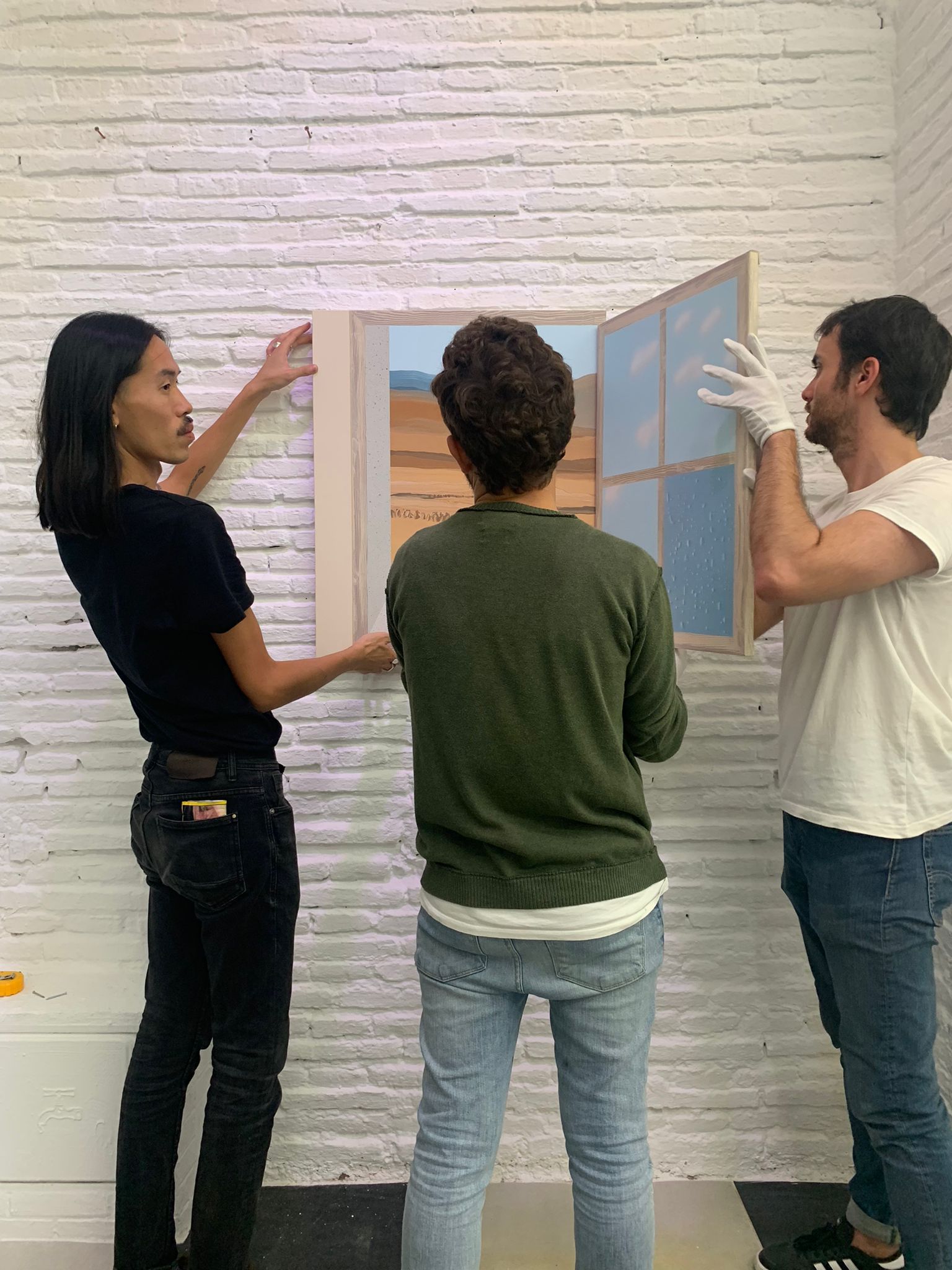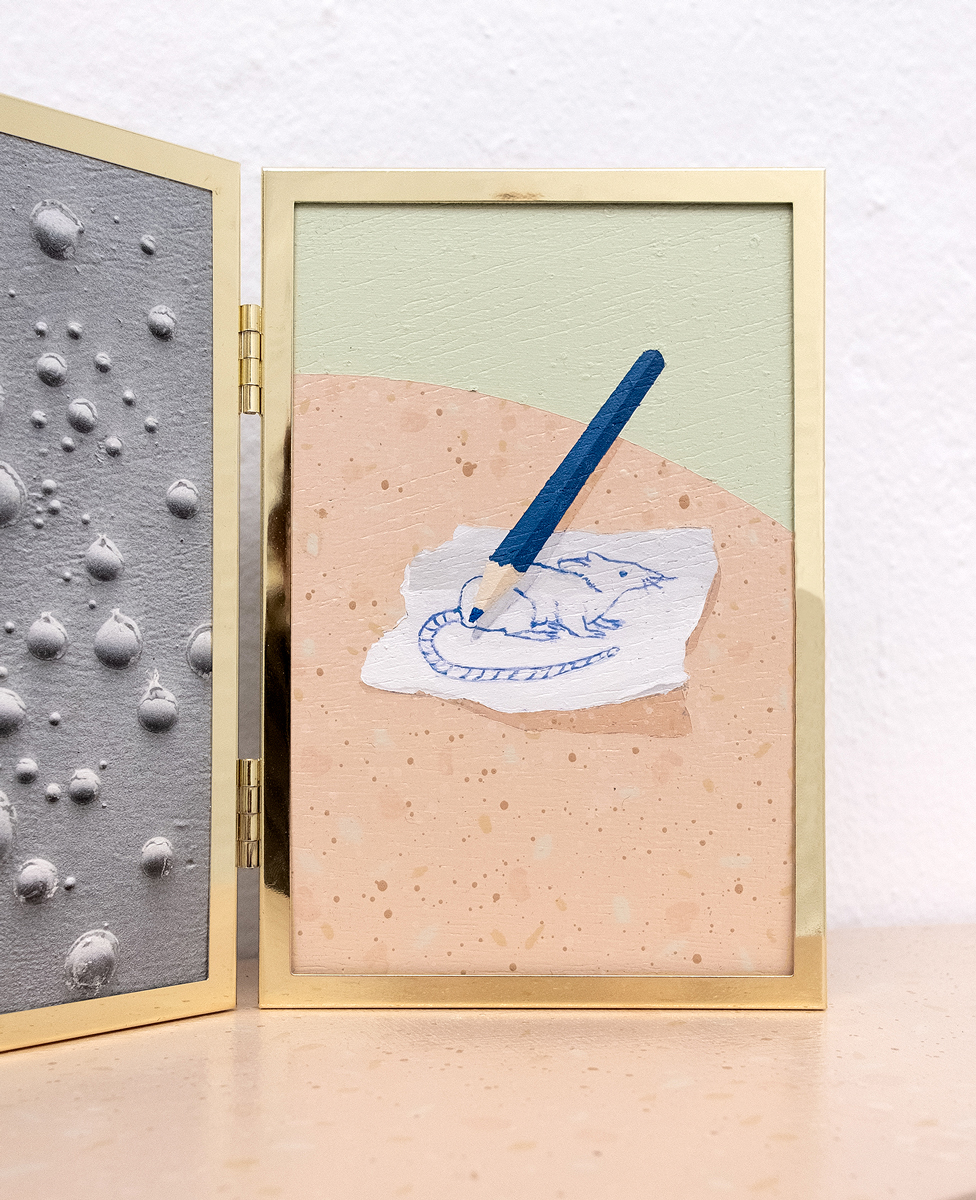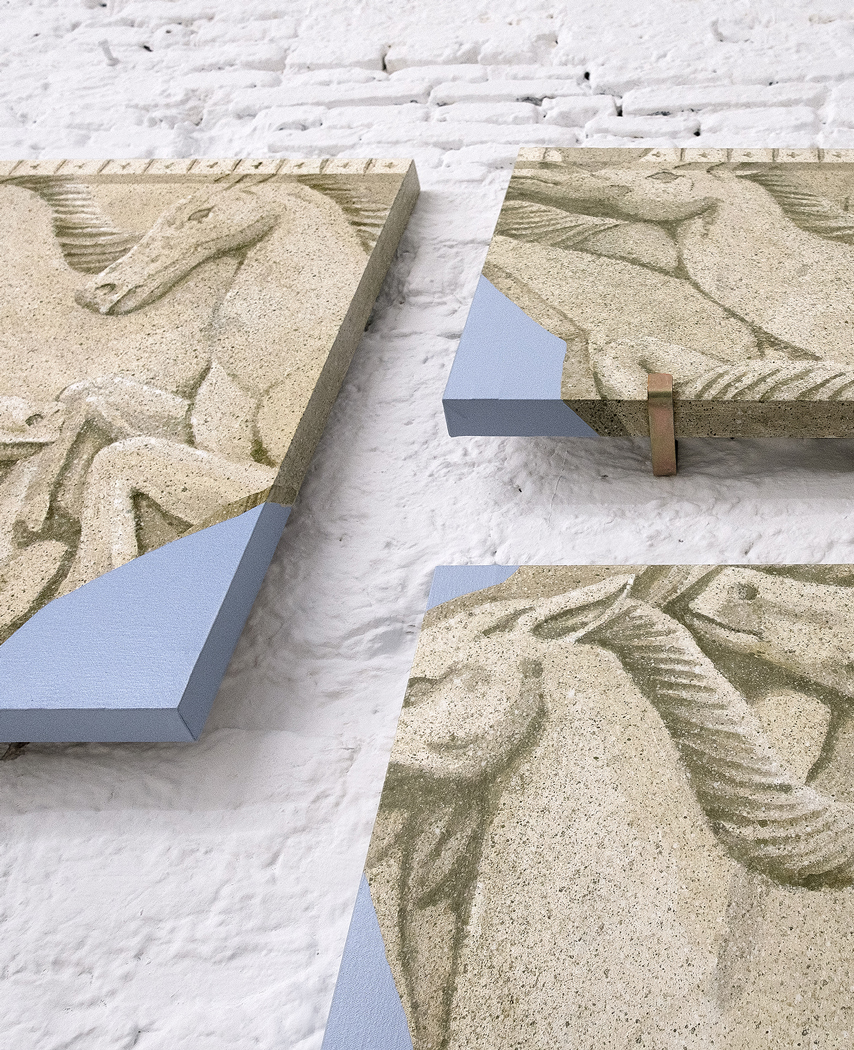Philosophy, science, poetry, archaeology, geology and much more: from all of these areas curators Ignacio González Olmedo and Juan José Aguilar Orellana have drawn, draw and will draw - prast, present and future - in their latest exhibition, “Todas las Partes Blandas se Perderán”.
In it, they have curated a selection of Madrid-based artist An Wei’s pieces, relating his practice to the concepts of the past, the fossil and the stratum, linked in turn to those of memory and loss within the domestic realm. Ignacio and Juanjo met years ago, more or less at the same time as they ran into An Wei at an opening, giving birth to a dangerous trio that has collaborated ever since. Their most recent joint show opened last November at Berlin Galería in Sevilla, a former nightclub which was converted to an artistic space in 2021 by Jesús Barrera, its current director. As the curators told me, this project was born mainly from the desire that both of them had to collaborate with An Wei and Jesús, whom they had known for a long time. Happily, it ended up becoming something similar to the parties that were thrown there years ago, filling the street with hordes of people that reminded the pair of the time when the space was still one of the city’s main hot spots.
I chat with Juanjo and Ignacio about the project, asking them about what it means to curate from friendship and to integrate the work of a young artist within an old glory of the Sevillian revelry, turned today into an art center, enjoying each of the responses of this unstoppable dynamic duo.
Over the years, we have developed a close relationship with several artists, similar to the one we have with An Wei, with whom we have carried out various projects since more or less the beginning of our curatorial career. In parallel to this, friendship was also what put Juanjo and I together, as we were classmates in a master's degree in museology, and eventually also became “business partners.” (laughter).
With hindsight, we can see how friendship has indeed shaped our curatorial practice. It affects how we socialize, how we work, how we approach projects... Over time, as our sort of friendly-personal-professional relationship has consolidated, we have learnt from each other, and understood how to develop exhibition ideas in a way that fits for both of us and takes advantage of our differences.
Because of this, we are very happy with this project, as we believe that we have managed to combine in an organic way (which reflects the passage of time in regards to our personal friendship and the one we have with An Wei) the poetic curatorial approach provided by Juanjo, as well as the more scientific one put forth by Ignacio. This has allowed us to treat An Wei's work at this intersection, in which his fragmented works allow each person to reconfigure and complete each piece.

On to the juicy stuff - In “Todas las partes blandas se perderán”, you have used the concepts of “the preterite”, “the fossil” and “the stratum” to reflect on a selection of An Wei’s pieces, even though the artist hardly ever gives theoretical explanations of his own work. Can you guide us through this process? Did you also consider the characteristics of the exhibition space, Berlin Gallery?
Continuing with what we have commented above, because we have known An Wei for such a long time, we have been able to see how he has deepened a line of work composed of pictorial installations that pose incomplete experiences, placing visitors in an active role that prompts them to complete and integrate the pieces through their own subjectivity.
To approach this process within the context of this exhibition - where the works somehow always refer us to a past, to a lost experience to which we seem always to arrive late - we found that the versatility offered by the concepts you mentioned allowed us to treat An Wei's work in this double way, poetic and scientific, playing with the dual meanings and readings that could be produced.
The concepts have a semantic coherence, allowing us to deploy an approach to the different series of the exhibition that fit perfectly with An Wei's way of working, as he gives great importance to the site-specific nature of the works. Therefore, the artist’s approach to Berlin Gallery, which was a former nightclub that retains traces of its history in its spatial configuration (disco lights, different types of flooring, uncovered walls), was developed from a vision linked to archeology and paleontology.

Having erected the exhibition with your own hands, what are your views on the often multifaceted role of the curator? Should you be prepared to get down in the mud and do whatever is needed?
Even though it was Juanjo who did the wonderful job of setting up this show, we both habitually participate in this phase of our exhibitions. For us, curation is ultimately about all the phases of a project. In this aspect, the importance of working in the exhibition’s assemblage - plus having foreseen the technical complications and the myriad of inconveniences that always appear in relation to budget and space - and generating a more horizontal role with the artists and the technical professionals involved is clear to us.
However, we believe that “getting into the mud” does not only have to do with this more manual aspect of the assemblage. We consider equally important all the work that is related to the coordination and management of the exhibitions: the thousands of emails exchanged with artists, suppliers, gallery owners or institutions... We usually try to help or participate in this too, even though it is usually left in the hands of specialized figures, because, as we have said, we consider that it is also part of the curation. In the end, it is through all these conversations and negotiations that must be carried out for the exhibition to go ahead that the project, and how the people who are part of it feel, is to a large extent defined. This is one of the things we give most importance to. It is a more administrative part of the project, but it is also fundamental in order to develop from the beginning that closer/friendlier approach that we are interested in.

In your exhibitions, you give great importance to details. In this case, you printed the press releases in see-through onion paper to give the impression of the words being a stratum on the page. What sort of reaction do you mean to provoke through these type of proposals?
It's a funny question, as our friendship actually began because we were united by a shared hatred for the typical cardboard exhibit labels that are usually found in exhibitions. So, one of the things that were most clear to us from the beginning of our work was that all those small elements that make up the exhibitions - the exhibit labels, the room sheets, the flyers - were objects with a lot of potential, through which we could give coherence to the projects. They are details that we believe create a denser atmosphere in the exhibition and allow people to enter into the discourse that we articulate in a deeper way. For example, we once designed paper napkins for one of An Wei installations, related to baroque’s still lifes, decorated with XVI proverbs that summarized the spirit of the project and connected to the space where it was displayed (the cafeteria of CA2M).
In addition, we believe that it is also a fun aspect, to somehow put forth a bit of ourselves in the exhibition. We often say that they are our own pieces.

By the way, your opening party was a great success, filling Berlin Gallery with visitors from Sevilla and Madrid. Are events important to activate the works? Do you consider specific audiences when envisioning a show?
The opening of the exhibition went very well and created a very pleasant atmosphere, with many people from Seville and Madrid who had gone there on purpose. Regarding the activation of the works, we believe that everything worked ideally, as something unforeseen happened that we believe completed the works perfectly. There is a point in the curatorial text in which we refer to the ichnofossils, which are literally “fossilized traces”. One of the installations was a sort of speculative archaeological exercise on the floor of the gallery itself, referring to when it was a club. Due to the crowds, the mixture of festive atmosphere and the conscientious visit of the different works, some people unintentionally stepped on this work, which functioned as a trompe l'oeil, leaving the footprints of their shoes on the false floor of that nightclub, unexpectedly activating and completing the work.
In regards to the role that audiences play in the design of projects, the most relevant aspect for us is their accessibility, both physically and conceptually. We always try to adapt the materialization of our ideas to a form in which contemporary art does not put up barriers or intimidates, materially or discursively. For example, in another project related to the yuppie generation (YUPI), we made office-type post-it notes with nice messages that helped visitors interact with the exhibition.
Words by Whataboutvic






